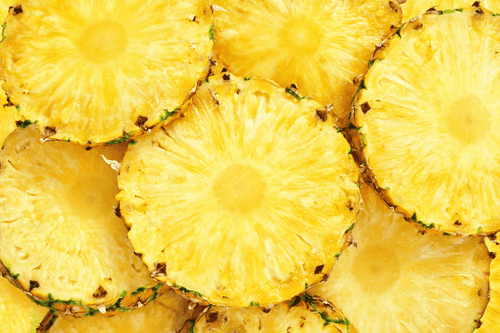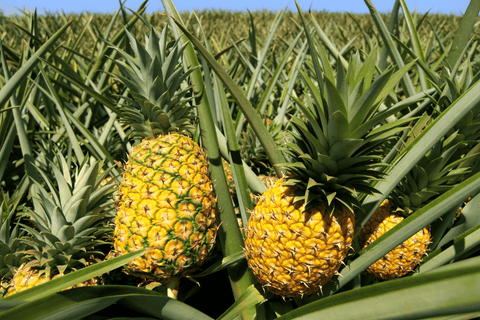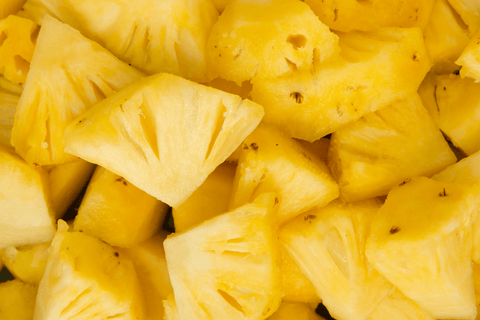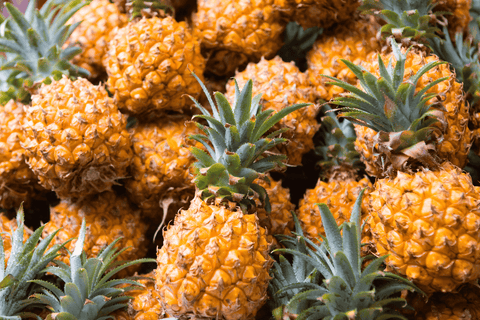From the moment it arrived in Europe, the pineapple sparked enthusiasm. Its exotic shape and unique taste made it a symbol of wealth and prestige. Explorers and navigators transported it around the world, contributing to its spread and popularity. It was eaten fresh, canned, or preserved.
In the 18th century, pineapple cultivation developed in the French, Spanish, and Portuguese tropical colonies. The fruit became more accessible and began to gain popularity in Europe.
In addition to its delicious taste, pineapple is also known for its health benefits. Its bromelain content, an enzyme with digestive and anti-inflammatory properties, makes it a valuable ally for well-being.
Today, pineapple is widely cultivated in tropical and subtropical regions around the world. It has become a common and affordable fruit, prized for its delicious flavor and numerous nutritional benefits.
It can be eaten fresh, juiced, in salads, as a dessert, in cocktails, etc. It is also used in cooking to enhance both savory and sweet dishes. Pineapple is also used to make jams, jellies, syrups, and vinegars.



















